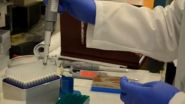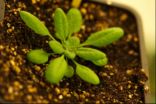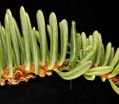(Press-News.org) VIDEO:
Georgetown Lombardi Comprehensive Cancer Center researcher Anna T. Riegel, PhD, discusses a new technique that allows the growth of both normal and cancer cells and keeps them alive indefinitely is...
Click here for more information.
WASHINGTON — A new technique that allows the growth of both normal and cancer cells and keeps them alive indefinitely is transforming and expediting basic cancer research, say investigators from Georgetown Lombardi Comprehensive Cancer Center.
The scientists demonstrated that the use of conditionally reprogrammed cells (CRCs) significantly reduced the time it took to develop a certain type of breast cancer in mice. The tumor that grew also behaved as it does in human breast cancer retaining gene expression patterns-- allowing for a more accurate animal model for studying the disease.
"We've had a glimpse of how these cells can provide an amazing advance in human cancer clinical research in preliminary work, and now we demonstrate how incredibly useful they are in laboratory cancer research," says Anna T. Riegel, PhD, Cecilia Rudman Fisher Professor of Oncology and Pharmacology at Georgetown Lombardi. The work was published online May 15 in PLOS ONE.
For example, it normally takes Riegel and her team seven to nine months from birth to grow tumors in transgenic mice that express a particular oncogene (HER2) in their mammary gland cells. In this study, using CRCs, the team showed that cells taken from the tumor in one mouse could be grown indefinitely, and that transplanting about a million of these cells into a second mouse produced tumors in one month, with metastasis two weeks later.
"The tumors that grew in the second mouse had the same pathology and gene expression as tumor cells taken from the transgenic mouse," Riegel says. "This means we don't have to create and grow transgenic mice every time we want a good mouse model of breast cancer."
This finding could dramatically expedite Riegel's research, which focuses on how the environment that surrounds a tumor — the supporting cells, fat tissue, immune cells and blood system — affects development of breast cancer. "Using CRC cells will significantly speed up our research, and will provide much more dependable results."
She also showed that CRCs could create a bank of normal mouse breast cells that grow all the 3D structures of a normal breast.
CRCs were developed in late 2011 by Georgetown Lombardi researchers Richard Schlegel, PhD, and Xuefeng Liu, MD. They discovered that adding two different substances to cancer cells or to normal cells push them to morph into stem-like cells that stay alive indefinitely. When the two substances are withdrawn, the cells revert back to the cell type they once were.
This method overcomes a longstanding obstacle in cell biology research: while immortalized tumor cell lines did and still do exist, their gene expression and pathology change so much over time that researchers say they cease to resemble natural cancer cells.
Another use of this technology is to create cell lines from patient tumors and testing the cells with various therapies to find the treatment that works. Georgetown Lombardi researchers demonstrated this strategy in the September 27, 2012, issue of the New England Journal of Medicine. They described how CRCs derived from normal and tumor cells of a 24-year-old man with a rare type of lung tumor allowed physicians to identify an effective therapy by testing it on his cells in the lab.
INFORMATION:
In addition to Riegel, co-investigators on the PLOS ONE study include Francisco R. Saenz, Virginie Ory, PhD, Maram Al-Otaiby, PhD, Sonia Rosenfield, PhD, Mary Furlong MD Luciane R. Cavalli, PhD, Michael D. Johnson, PhD, Xuefeng Liu, PhD, Richard Schlegel, MD, PhD, and Anton Wellstein, MD, PhD, all of Georgetown Lombardi.
This work was funded in part by grants from the National Institutes of Health (CA113477, CA177466, CA180524, CA051008), the Cherry Blossom Breast Cancer Foundation Grant and by a Susan G. Komen Training Grant.
Georgetown University has filed a patent application on the technology described in this paper. Schlegel and Liu are inventors on the patent. In addition, Georgetown University has licensed the technology to a start-up company for commercialization. Schlegel and Liu serve as consultants to this company, and Georgetown and Schlegel have ownership interest in the company.
The PLOS ONE study can be found here after May 15: http://dx.plos.org/10.1371/journal.pone.0097666.
About Georgetown Lombardi Comprehensive Cancer Center
Georgetown Lombardi Comprehensive Cancer Center, part of Georgetown University Medical Center and MedStar Georgetown University Hospital, seeks to improve the diagnosis, treatment, and prevention of cancer through innovative basic and clinical research, patient care, community education and outreach, and the training of cancer specialists of the future. Georgetown Lombardi is one of only 41 comprehensive cancer centers in the nation, as designated by the National Cancer Institute (grant #P30 CA051008), and the only one in the Washington, DC area. For more information, go to http://lombardi.georgetown.edu.
About Georgetown University Medical Center
Georgetown University Medical Center (GUMC) is an internationally recognized academic medical center with a three-part mission of research, teaching and patient care (through MedStar Health). GUMC's mission is carried out with a strong emphasis on public service and a dedication to the Catholic, Jesuit principle of cura personalis -- or "care of the whole person." The Medical Center includes the School of Medicine and the School of Nursing & Health Studies, both nationally ranked; Georgetown Lombardi Comprehensive Cancer Center, designated as a comprehensive cancer center by the National Cancer Institute; and the Biomedical Graduate Research Organization, which accounts for the majority of externally funded research at GUMC including a Clinical and Translational Science Award from the National Institutes of Health. END
New tool to grow cancer cells streamlines laboratory research
2014-05-16
ELSE PRESS RELEASES FROM THIS DATE:
New kidney allocation policy could improve the success of transplantations in the US
2014-05-16
Washington, DC (May 15, 2014) — A newly approved US policy regarding allocation of kidneys from deceased donors will likely improve patient and transplant survival, according to a study appearing in an upcoming issue of the Journal of the American Society of Nephrology (JASN). The true effects of the new policy are yet to be seen, however, and officials will evaluate its intended and unintended consequences on an ongoing basis.
In 2013, the Organ Procurement and Transplantation Network in the United States approved a new national deceased donor kidney allocation policy ...
Novel genetic mechanism protects plants from toxic zinc
2014-05-16
Zinc is essential for optimal plant growth and development but when high levels of the metal are present in the soil, it can become toxic to the plant. Consequently, plants need to trigger mechanisms capable of coping with that stress. Researchers from the Instituto Gulbenkian de Ciência (IGC) have now discovered a novel genetic mechanism that protects plants from toxic zinc levels. The research team, led by Paula Duque, identified a gene that produces a protein capable of sequestering zinc inside the cells of the root. In the presence of high levels of zinc, this gene ...
Tumor cells in the blood may indicate poor prognosis in early breast cancer
2014-05-15
Tumor cells in bone marrow of early breast cancer patients predict a higher risk of relapse as well as poorer survival, but bone marrow biopsy is an invasive and painful procedure. Now, it may be possible to identify tumor cells in a routine blood sample and use them as prognostic markers, according to a study published May 15 in the Journal of the National Cancer Institute.
To assess the prognostic value of circulating tumor cells (CTCs) in patients with early breast cancer, Brigitte Rack, M.D., of the Department of Gynecology and Obstetrics, Klinikum Innenstadt, ...
Older migraine sufferers may have more silent brain injury
2014-05-15
DALLAS, May 15, 2014 — Older migraine sufferers may be more likely to have silent brain injury, according to research published in the American Heart Association’s journal Stroke.
In a new study, people with a history of migraine headaches had double the odds of ischemic silent brain infarction compared to people who said they didn’t have migraines. Silent brain infarction is a brain injury likely caused by a blood clot interrupting blood flow to brain tissue. Sometimes called “silent strokes,” these injuries are symptomless and are a risk factor for future strokes.
Previous ...
Study -- overweight teens more likely to be rejected as friends by normal weight peers
2014-05-15
Tempe, Ariz. (May, 15, 2014) - Overweight young people are more likely to be rejected as friends by peers who are of normal weight, according to new research by Arizona State University social scientists.
"Using Social Network Analysis to Clarify the Role of Obesity in Adolescent Friend Selection," published in the American Journal of Public Health by Arizona State University Associate Professors David R. Schaefer of the School of Human Evolution and Social Change and Sandra D. Simpkins of the T. Denny Sanford School of Social and Family Dynamics, used social network ...
2 JAMA Ophthalmology studies focus on glaucoma medication adherence
2014-05-15
Electronic monitoring to measure medication adherence by patients with glaucoma documented that a sizable number of patients did not regularly use the eye drops prescribed to them.
Topical medications for glaucoma lower intraocular pressure and can delay or slow the progression of the eye disease. Medication adherence is important.
Patients who were treated with once-daily prostaglandin eye drops were recruited from a university-based glaucoma clinic. Patients were given a container with an electronic cap in which to store their eye drops. The cap recorded each ...
NYC safe routes to school program reduces injuries and saves hundreds of millions of dollars
2014-05-15
As Bike to Work week continues, New Yorkers got some good news from a team of researchers at Columbia University's Mailman School of Public Health. Using funds from the federally funded Safe Routes to School program enacted in 2005 in an effort to create safe environments for American children to walk or bike to school, New York City made safety changes to the most dangerous intersections near schools. These interventions included narrowing intersections by building out sidewalks, setting off dedicated bicycle lanes, and installing speed humps, and timing lights so pedestrians ...
Study uncovers new evidence on species evolution
2014-05-15
A study involving Simon Fraser University researchers and published today in the journal Science has found evidence for the genomic basis of how new species evolve, in adapting to different environments.
Researchers studying an insect known as the walking stick (genus Timema) determined that the process of "speciation" happened in association with the use of different host plants. They also determined that across many populations of the insect, those on one host plant are diverging, genetically, from the populations on another host plant, a process they call "parallel ...
Land and power: Women discover one can lead to the other
2014-05-15
The change was clear and it was dramatic: "I went from being property to owning property," a woman in a remote area of Nicaragua told UC Santa Cruz assistant professor of psychology Shelly Grabe.
Grabe wanted to know how the power dynamic between men and women might change when women owned land. More importantly, she wanted to know how the propensity for gender-based violence against women might change.
Writing in the journal Psychology of Women Quarterly, Grabe suggests that when women in developing countries own land, they gain power within their relationships and ...
Caught in the act: Study probes evolution of California insect
2014-05-15
HOUSTON -- (May 15, 2014) -- A first-of-its-kind study this week suggests that the genomes of new species may evolve in a similar, repeatable fashion -- even in cases where populations are evolving in parallel at separate locations. The research is featured on the cover of the May 16 issue of Science.
A team of evolutionary biologists at Rice University, the University of Sheffield and eight other universities used a combination of ecological fieldwork and genomic assays to see how natural selection is playing out across the genome of a Southern California stick insect ...



